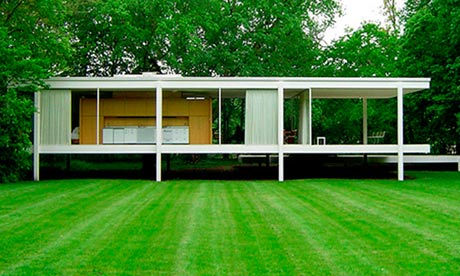
It's been a good year for ranting – for declaiming and excoriating, that is, of a witty, perceptive and entertaining kind. Thus we have Jonathan Meades's collection of essays and screenplays, Museum Without Walls (Unbound £18.99), in which the author waxes both lyrical and bilious on subjects including Sir Edwin Lutyens, Buenos Aires, train stations, the dismal works of Blairite regeneration and the Third Reich. Don't expect systematic theory, or an absence of repetition, but do expect love and loathing expressed in prose close to the 400-nanometer end of the colour spectrum, but precise and exhilarating nonetheless. Never knowingly under-adjectived, not shy of neologisms, Meades offers up phrases such as the following, in which he accuses contemporary architects of "feeding on the avant-garde of many decades ago, merely saucing the dish with sustainastic, sustainabulous splashes of green piety and chromatic discord".
Meades has antecedents in Southampton, the city which also nurtured (if that is the word) Owen Hatherley. They are a few decades apart in age, but kindred sprits, in their combination of fascination with overlooked places and their eloquent fury. Something in the Sotonian air that breeds them, evidently. This year, Hatherley published A New Kind of Bleak: Journeys Through Urban Britain (Verso £20), a rapidly produced follow-up to his A Guide to the New Ruins of Great Britain. As in the earlier book, the new one takes you on a tour of places – Preston, Leicester, Cumbernauld – whose touching fragments of dignity are under relentless assault from the same Blairite junk that Meades hates.
Hatherley rampages around the country a little as Nikolaus Pevsner once did for his Buildings of England series, but instead of seeking out delightful early English churches and Palladian houses, he describes the most repulsive Novotels and buy-to-let apartment blocks he can find. Imagine a restaurant guide concerned mostly with purveyors of microwaved spaghetti bolognaise and you get the picture.
Other angry books include David Harvey's Rebel Cities (Verso £12.99), a Marxist dissection of the way forces of capital shape the places where we live. It's not something to be tackled after an over-liquid Christmas dinner, as the prose is hard work. It also ends with a statement of belief in the power of the Occupy movement to change the world, which is already looking optimistic. But this book has the merit of being right quite a lot of the time and provocative for much of the rest of it.
The Future of Architecture. Since 1889. (Phaidon £45) is, with its clever-clever full stops and all, an irritating title for a good book. Written by the French historian Jean-Louis Cohen, it is a survey of architecture over the last century and a bit, which seeks to uncover the full richness of invention and experiments over this period, in multiple locations. This is in conscious opposition to previous Eurocentric histories of the period, which tended to focus on the works of a few great masters and their apparent convergence to create something called modern architecture. If there were prizes for picture sourcing, this would win it, with its abundant documentation of wide-eyed young revolutionaries, little-known schools and villas and forgotten visions.
If you want to know still more about the architecture of the last century, however, go to Mies van der Rohe: A Critical Biography (University of Chicago $45) by Franz Schulze and Edward Windhorst. This a magisterial update of a magisterial biography of a magisterial figure, a work that gives due credit to the force of its subject's architecture, while also pulling no punches on subjects such as his treatment of the women in his life and his willingness to talk – a little more than was decent – to the Nazis.
Otherwise, if you want to soothe yourself after the ranting with delightful and evocative images, try Balthazar Korab: Architect of Photography (Princeton Architectural £25) by John Comazzi, a collection of mostly black-and-white photographs of mid-century American modernism – the austere luxury of Mies van der Rohe, the curves of Eero Saarinen – which capture a confident faith in the future, but also a subtle melancholia. Or else London: Hidden Interiors (Transatlantic £40), an English Heritage production assembled by Philip Davies, which includes art deco ballrooms and the gallows at Wandsworth prison, as well as quite a lot of oak and walnut panelling.
Finally, two versions of the domestic. Edwin Heathcote's The Meaning of Home (Frances Lincoln £12.99) uses an engaging range of sources (Alfred Hitchcock, Ludwig Wittgenstein, the Cabbala) to explore the significance of such things as stairs, roofs and swimming pools. Then there is Will Wiles's Care of Wooden Floors (Harper £12.99), a novel about minimalism and chaos, which reveals more about the interaction of architecture and life than many an earnest treatise. If you want above all a good read, get this one.

